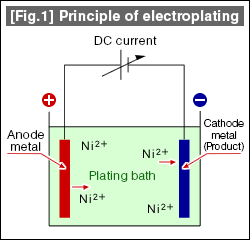Nitriding is a process of forming a hard nitride material by diffusion penetrating nitrogen, and the use of ammonia gas was initially developed. The main purpose of the nitriding is to improve the wear resistance, but nitrocaburizing is aimed to improve the fatigue resistance.
Because nitriding and nitrocaburizing are processed at temperatures below the steel's transformation point, they are characterized for less thermal deformation caused than carburizing processed at temperatures above the steel's transformation point.
Nitriding processes are shown in [Table 1].
[Table 1] Types of Nitriding
| Process Method | Reactive Material |
| Nitriding | Gas Nitriding | Ammonia gas (NH3) |
| Plasma Nitriding | Nitrogen (N2) + Hydrogen (H2) |
| NH3cracked gas |
| Nitrocaburizing process | Gas Nitrocaburizing | NH3 + Endothermic gas (RX) |
| NH3 + Methanol decomposed gas |
| Decomposed gas of solid urea (CO(NH2)2) |
| Nitrogen base (N2+NH3+CO2+H2) |
| Salt bath Nitrocarburizing | Cyanate (CN,CNO) |
| Nitrosulphurizing Process | Gas Nitrosulphurizing | NH3+CO2+H2S |
| N2+NH3+CO2 + Sulfur tablets (S) |
| Salt bath Nitrosulphurizing | Cyanate (CN, CNO) + Sulfides |
|
(1) Gas nitriding
It is a method simply heating in ammonia gas that was initially developed. The ammonia contacting the heated steel surface is decomposed into activated atomic form nitrogen and hydrogen, then the nitrogen is diffused into the steel to form the nitride to harden.
(2) Plasma Nitriding (Ion Nitriding)
In a pressure reduced vacuum chamber, nitrogen and hydrogen are introduced where the furnace body is made into anode and the process target is made into cathode, and several hundred volts are applied to cause glow discharge at the anode side. The positively charged nitrogen ions and hydrogen ions collide into the workpiece that is cathodic. The collision raises the temperature of the workpiece and the nitride formed will diffuse into it.
(3) Gas Nitrocaburizing
Nitrocaburizing is a carbon diffusion process similar to nitriding process, and is aimed to improve fatigue resistance. Cracked gas of urea, ammonia and carbon dioxide added to nitrogen are used.
(4) Salt bath Nitrocarburizing
The Tufftride process developed by a German company Degussa Corporation is well known.
(5) Nitrosulphurizing
It is a process of also diffusing sulfur to give wear resistance and sliding properties.

